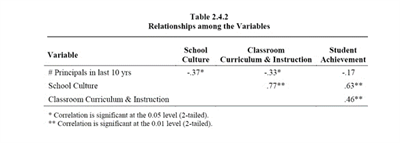A principal’s leadership provides solidarity and direction that leads to success for a school. However, high turnover rates for this leadership position is a problem many districts face. Principals lead a school’s culture and norm which dictate a classroom’s student-teacher relationship and a student’s long-term success. With this in mind, we can see how having principals frequently leaving the school can leave it without a solid leadership foundation and have a negative impact on student’s success.
The Numbers
Let us get some perspective on how frequent principals are leaving schools. Ed Fuller, Associate Professor in the Education Leadership Department at Penn State University, research shows Texas’s high school principals’ average years on the job is about 3 years. In other words, many principals never see their freshman class graduate. According to School Leaders Network, they found out that 25,000 (1/4 of the country’s principals) leave their position each school year. According to the US Department of Education 70 % of the principals never make it to the 5-year mark. These numbers are quite alarming. School Leader Network’s research suggests that a principal’s leadership effects on students contributes to about 25% of the total school influences on a child’s academic performance.
The Symptoms
Below is some of representation of the negative impact of this epidemic conducted by the Wallace foundation.
The average number of principals in school for that past 10 years is 2.78. To further understand this let’s look at another table to see the impact on the school’s culture, curriculum and instruction.
This table depicts the principals’ turnover rate and the negative impact on school culture and classroom curriculum and instruction. There is a negative correlation between these factors. The school culture however strongly aligned with the curriculum and instruction and therefore student overall achievement.
Now that we have a numeric understanding of the problem; let’s highlight some of the issues it proposes:
- Lack of staff loyalty and performance
- Principals’ efforts only reach the initiation stage and cannot cement for positive impact
- Greater difficulty in recruiting effective and qualified educators
- Long-term impact on the school’s achievement profile
The Antidote
It is evident the negative impact of the “Revolving door syndrome” has in schools. One way to fight back this is to implement an effective candidate selection tool. This provides a way for school to hire principals that provide the best fit for the school’s culture to ensure term longevity, loyalty and effectiveness.
Leadership Development Solution, or LDS, takes into consideration the district, school, and community when selecting K-12 leaders. The advantages of this solution includes: identifying prospect candidates, identifying misfit candidates and applicants as well as measure leadership and school performance.







